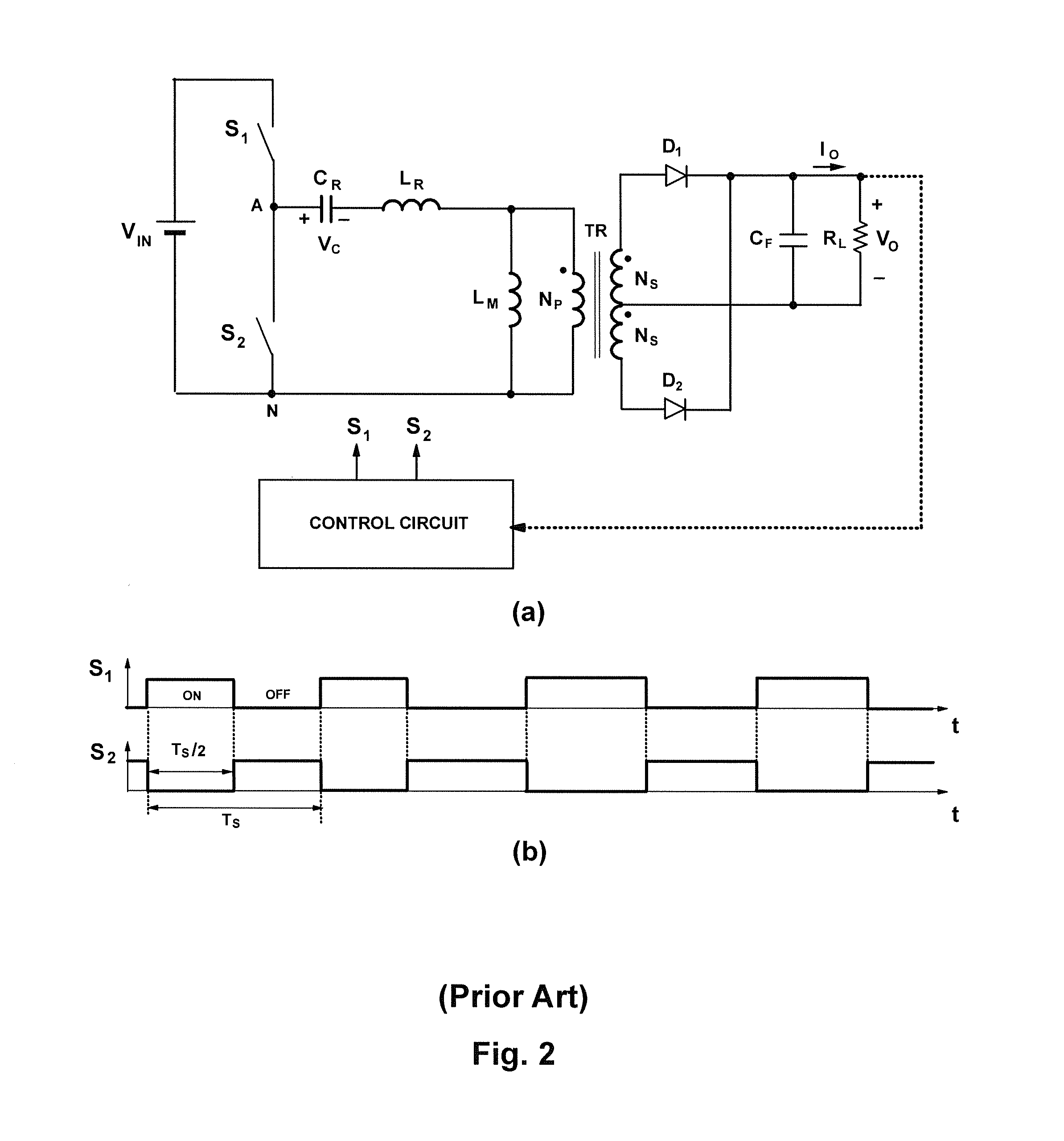Power converters for wide input or output voltage range and control methods thereof
a power converter and input or output voltage technology, applied in the direction of electric variable regulation, process and machine control, instruments, etc., can solve the problems of increased switching losses of converters, inconvenient use of resonant converters, and inability to meet the needs of wide output voltage range applications. achieve the effect of improving efficiency of power converters
- Summary
- Abstract
- Description
- Claims
- Application Information
AI Technical Summary
Benefits of technology
Problems solved by technology
Method used
Image
Examples
Embodiment Construction
[0018]FIGS. 1(a) and 2(a) show simplified circuits or models of conventional full-bridge (FB) and half-bridge (HB) LLC resonant converters, respectively. FIGS. 1(b) and 2(b) are the corresponding timing diagrams for the principal switches of the FB and HB LLC resonant converters, respectively. Both the circuits of FIGS. 1(a) and 2(a) use conventional variable switching-frequency control to regulate the output voltage. In the FB LLC converter shown in FIG. 1(a), control is achieved by simultaneously switching the S1 and S3 switch pair and S2 and S4 switch pair in a complementary fashion, with each switch operating at a 50% duty ratio, as illustrated in FIG. 1(b). Similarly, in the HB LLC converter of FIG. 2(a), the variable switching-frequency control is achieved by switching switches S1 and S2 in a complementary fashion, with each switch operating at a 50% duty ratio, as illustrated in FIG. 2(b). The switching frequency for each LLC converter is a function of input voltage VIN, outp...
PUM
 Login to View More
Login to View More Abstract
Description
Claims
Application Information
 Login to View More
Login to View More - R&D
- Intellectual Property
- Life Sciences
- Materials
- Tech Scout
- Unparalleled Data Quality
- Higher Quality Content
- 60% Fewer Hallucinations
Browse by: Latest US Patents, China's latest patents, Technical Efficacy Thesaurus, Application Domain, Technology Topic, Popular Technical Reports.
© 2025 PatSnap. All rights reserved.Legal|Privacy policy|Modern Slavery Act Transparency Statement|Sitemap|About US| Contact US: help@patsnap.com



